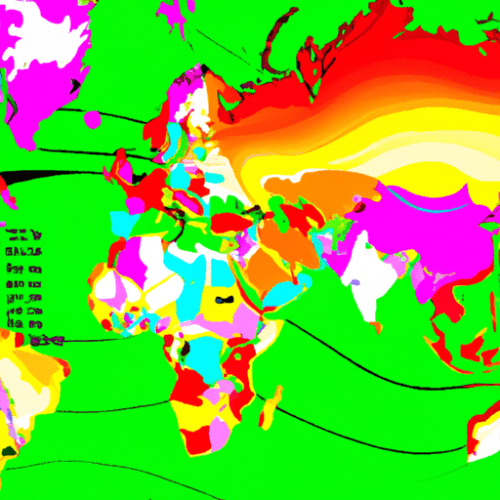
Chad, a landlocked country in north-central Africa, rarely finds itself in the global spotlight. Yet its economic situation offers a compelling narrative about resilience amid staggering hardship. When we hear about poverty percentages — such as nearly 42% of Chadians living beneath the national poverty line (World Bank, 2023) — it is easy to overlook the real-life struggles and systemic challenges these numbers represent. In this post, we take a journey behind the numbers to reveal what daily life looks like for people in Chad, explore the root causes of persistent poverty, and understand how the latest statistics can drive meaningful change.
Whether you're a policymaker, researcher, or a curious global citizen, gaining insights into Chad's poverty data not only changes perceptions but shapes the vital conversations needed for transformation.
Understanding Chad’s Poverty Landscape: The Numbers in Context
Before we delve into the stories and consequences behind the data, let’s frame the statistical backdrop. Chad is ranked among the world's poorest countries according to the United Nations Human Development Index. With an estimated population of over 17 million people (2023), the fight against poverty in Chad is a formidable challenge influenced by political, geographical, and economic factors.
Key Poverty Indicators in Chad (2023 Data)
- Poverty Rate: Approximately 41.9% of Chadians live below the national poverty line (African Development Bank).
- Extreme Poverty: Nearly 41% of the population lives on less than $2.15/day (2023 PPP).
- Human Development Index (HDI): Chad is ranked 190 out of 191 countries (UNDP, 2024).
- Child Malnutrition: About 38% of children under five are stunted due to chronic malnutrition.
- Literacy Rate: The adult literacy rate hovers at only 22%.
- Access to Clean Water: Less than 55% of the population has secure access to clean and safe drinking water.
These numbers reveal a harsh reality, but each statistic stands for real families, real children, and real communities struggling to survive and thrive.
Beneath the Surface: What the Data Means in Daily Life
No number can fully capture the daily struggle of a mother walking miles to fetch water, or a child whose early years are impacted by malnutrition. Here’s how the poverty data materializes into lived experiences:
- Education Gaps: With limited access to schools—especially in rural areas—children are often pulled out of classrooms to help with household chores, livestock, or subsistence farming. Only about 23% of girls complete primary education, contributing to the ongoing cycle of poverty.
- Health Vulnerabilities: Healthcare facilities are few and far between. For many, preventable and treatable diseases like malaria, diarrheal disease, and respiratory infections are a leading cause of death, particularly among children under five.
- Food Insecurity: Chad is prone to droughts, crop failures, and locust invasions, which exacerbate hunger. Over 5.5 million people were food-insecure during the last lean season, according to ReliefWeb.
“For many families in rural Chad, life is a daily negotiation between feeding their children, sending them to school, and seeking medical help. The numbers we see in reports are more than just data points — they represent impossible choices made every day.”
- Fadwa Ibrahim, Humanitarian Field Worker in Chad
Root Causes: Why Poverty Persists in Chad
Understanding Chad’s poverty requires more than statistics—it demands consideration of deep-rooted issues that fuel hardship:
- Political Instability: Decades of conflict, coups, and fragile governance have eroded public trust and stunted economic growth.
- Geography and Climate: The encroachment of the Sahara to the north and unpredictable rainy seasons challenge both agriculture and the distribution of resources.
- Lack of Infrastructure: With only 2,000 km of paved roads and sparse transportation networks, rural communities are left isolated from markets and essential services.
- Economic Dependence: Over 80% of the labor force is engaged in subsistence farming and livestock—sectors highly vulnerable to external shocks.
- Rapid Population Growth: High birth rates outpace economic gains, applying pressure on already limited resources.
Women and Children: The Disproportionate Impact
The burden of poverty in Chad falls heavily on women and children. Women are less likely to own land or access credit, resulting in lower incomes and higher vulnerability. Meanwhile, child marriage and adolescent pregnancy remain common, leading to interrupted education and generational cycles of poverty.
According to the UNICEF Situation Analysis, nearly 68% of women aged 20–24 were married before age 18. As a result, Chad has one of the highest maternal mortality rates worldwide, compounding the hardships facing poverty-stricken households.
Pathways Forward: Can the Numbers Guide Policy and Progress?
Scrutinizing poverty data helps illuminate where help is needed most and provides a foundation for smarter, evidence-based policies. Recent efforts by international organizations, the Chadian government, and local NGOs have shown promise. Pursuing initiatives like the 2030 Agenda for Sustainable Development, Chad has made modest progress:
- Expanding School Access: Projects to build classrooms and train teachers are slowly raising primary school enrollment rates.
- Water and Sanitation Programs: Investments in rural infrastructure are connecting more people with clean water sources.
- Women’s Empowerment: Microcredit programs and awareness campaigns offer new hope for economic self-sufficiency among women.
However, experts agree that significant, sustained investment is required—especially in rural healthcare, agricultural innovation, and transparent governance—if Chad is to make a meaningful dent in its poverty statistics.
Conclusion: Beyond the Numbers—A Nation’s Resilience
The statistics about poverty in Chad paint a daunting picture, but they are not merely numbers—they are a mirror reflecting the daily realities and enduring strength of its people. Behind every data point is a story of hardship, perseverance, and above all, hope.
Addressing poverty in Chad means acknowledging these faces behind the numbers while using data as a tool for accountability and action. In a changing world, informed attention and strategic investment can empower Chadians to shape a brighter, more equitable future.
Let’s continue to look beyond the spreadsheets and bar charts, recognizing the human stories—and extraordinary resilience—that poverty statistics both reveal and sometimes obscure. Chad’s poverty journey is not just a measurement. It is a challenge to global conscience—and a call to action.
Further Reading & Resources:
- World Bank: Poverty and Equity Brief on Chad
- UNDP Human Development Indicators: Chad
- UNICEF: Chad Country Information
- African Development Bank: Chad Data
Share this post to spread awareness and support the global fight against poverty in Chad.








